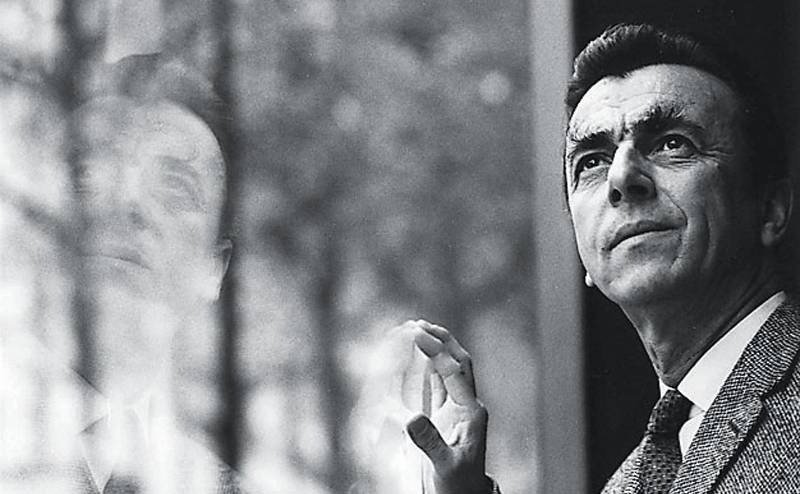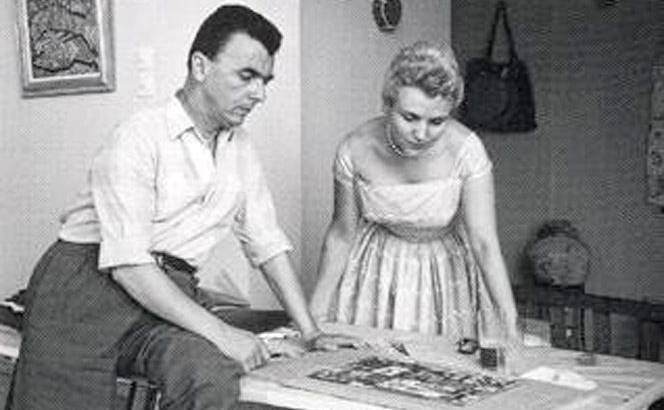Yannis Spyropoulos–Painter
Yannis Spyropoulos was born in Pylos, Messenia, on March 12, 1912. His parents were Georgios Spyropoulos (whom he did not meet because he had immigrated to America) and Figaleia Nikolopoulos. In 1913, he moved with his mother to Diakofto, where he lived with her family during childhood and adolescence. His childhood friend and classmate was the later great actor Dionysis Papagiannopoulos. From 1930 to 1936, he studied at the Academy of Fine Arts in Athens with Umberto Argyros, Spyridon Vikatos and Epaminondas Thomopoulos being his professors.
In 1938 (one year after his military service), Yannis Spyropoulos took part in the competition of the Academy of Athens (for European artist scholarships), where he won the 1st prize and went to Paris to study for three years. Afterwards, he studied at the Ecole Superieure des Beaux-Arts under Charles Guerin and at the free Academies Colarossi and Julian. In 1939, Spyropoulos interrupted his studies due to the Second World War and returned to Greece, where he temporarily stayed at the Barbalia guesthouse in Exarchia. In 1946, he worked at the Workers' Home Organisation as artistic director, responsible for organising cultural events in various workers' centres.
The early phase of the artist's painting is characterised by figurative depiction and is divided into the period of the "grey brush" (1940-1948) and the "vertical brush" (1949-1950). During this first period of his figurative works, still life, Greek landscapes and portraiture dominate. Yannis Spyropoulos began to enter abstract painting in the mid-1950s, while from the end of the 1950s, he advanced his pursuits into a constantly evolving sign writing. Also, in 1953, his participation in important group exhibitions began.
In September 1952, he met Zoi Margaritis, whom he married in 1957. In 1955, he participated in the Alexandria Biennale in Egypt, and in 1956, he received the visit of Herbert Mayer of the "World House Galleries" in Athens, concluding a collaboration contract. In 1958, he participated with his work "Anafiotika" (among the five works that represented Greece) in the international competition for the Guggenheim Prize in New York. The other four artists were Spyros Vassiliou, Yiannis Mitarakis, Panagiotis Tetsis and George Gounaropoulos, who won the prize for Greece.
In 1959, Yannis Spyropoulos held his first solo exhibition in New York ("World House Galleries"). In June 1960, when he was honoured at the 30th Venice Biennale with the UNESCO prize (together with the Italian Antonio Music), Yannis Spyropoulos made the big decision never to exhibit in Greece again.
In 1961, at his exhibition at the Kursaal of the Educational Centre of Ostend, in Belgium, he was awarded the city's Gold Medal, while in 1962, Chrysanthos Christos's monograph on Yiannis Spyropoulos’ work was published.
In 1964, the artist participated in the "Documenta III" exhibition in Kassel, Germany, as well as the "Palais des Beaux Art" exhibition in Brussels, Belgium. This was followed by his participation in the exhibition "The Israel National Museum of Art" in Jerusalem (1966) as well as in the exhibition of the "National Collection of Fine Arts" of the Smithsonian Institution in America (1969). Also, in January 1966, he was awarded the "Brigadier of the Royal Order" in Athens.
In December 1976, Yiannis Spyropoulos settled in his new house in Ekali (5 Phaedras Street), which simultaneously functioned as a home workshop and museum. In May 1978, he was awarded the Gottfried von Herder Prize by the University of Vienna, while in 1986, his last solo exhibition was organised by the "Nees Morfes" Gallery.
Giannis Spyropoulos passed away on May 18, 1990 (at 78). In the same year, the Presidential Decree was published for the establishment of the "Yannis and Zoe Spyropoulos Foundation", which assumed the responsibility of studying, presenting and publishing his work, as well as the annual awarding of Greek artists with the "Yiannis Spyropoulos" prizes.
In 1992, the Yannis Spyropoulos Museum was inaugurated, dedicated to the career of the painter, and in 1994, the Macedonian Museum of Contemporary Art organised a retrospective exhibition of his work. Finally, in 1995, the retrospective exhibition was held at the National Gallery.







